Este post também está disponível em:
Português
English
The sapphire stone was known in ancient times by the Egyptians as “the stone of the stars”. They believed that sapphire encouraged honesty, truth and justice.
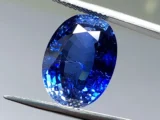
Regardless of its properties and “powers”, the colour and purity of this stone, as coveted and appreciated as the diamond, arouse the desire and interest of jewellery lovers.
The name sapphire is derived from the Greek term sappheiros meaning “the most beautiful thing” and the Latin saphirus meaning “blue”.
It was widely used by kings, kings of kings and kings of kings.
It was often worn by kings, queens and great men of the Church.
Set in rings, tiaras and crowns, they represented the high social rank of the people who owned them.
Even today, the English Court displays its exceptional pieces set with this precious stone.
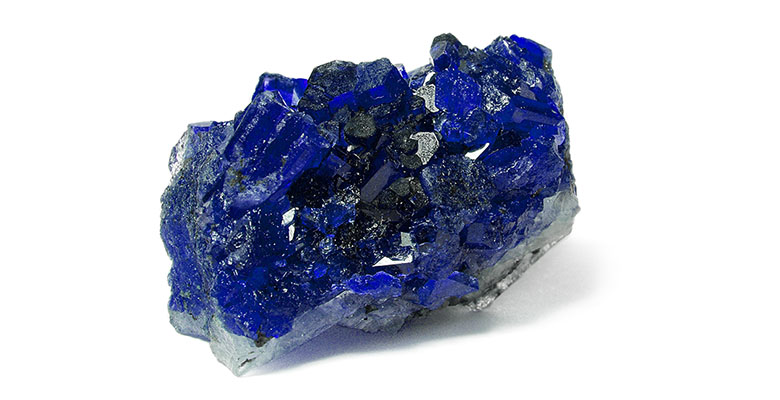
Sapphire belongs to the corundum mineral group with gemological qualities.
Sapphire is basically composed of aluminium oxide, with the chemical formula Al²O³. In its natural state, this chemical compound is colourless.
In the case of sapphire, the characteristic blue colour is due to the presence of titanium and iron in its composition.
Although the name sapphire is related to this colour, the gemstone we know has a wide variety of colours, due to the presence of “metallic impurities” in its composition.
Sapphire can be confused with other stones. Some of the pieces used in antiquity were set with gems such as lapis lazuli or topaz, thinking it was sapphire. It was not until around 1800 that it was discovered that the saira belonged to the group of corundums.
Corundum is an aluminium oxide mineral known for its hardness (9, index mineral on the Mohs scale) and its intense lustre. Due to these characteristics, it is widely used as a gemstone in its different varieties. The main ones are sapphire (blue) and ruby (red).
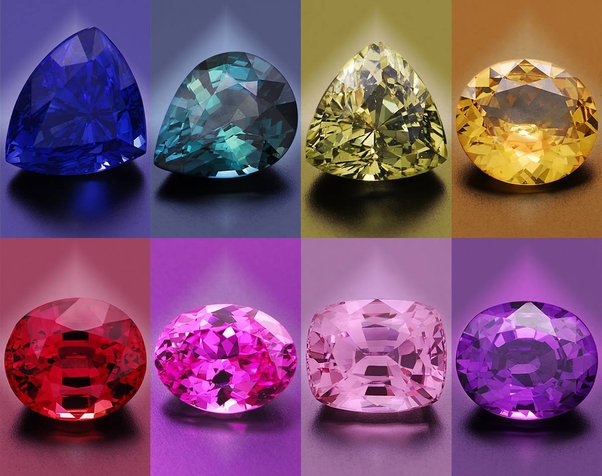
According to the presence of some elements, sapphires can come in different colours such as:
- yellow (with low iron content)
- green (due to the presence of titanium)
- pink, purple, brown, orange (with the presence of iron and chromium)
- Padparadscha sapphire, orange tending to salmon pink (with the presence of iron and chromium)
When called sapphire (without adjective) it always refers to blue.
In the case of sapphires with other colours their name always takes the colour as a complement, they are also known as fancy.
The red corundum always refers to the ruby.
Sapphire (blue) is widely used in jewellery for engagement rings and distinctive designer pieces, mainly for its intense and luminous colour.
However, in recent years, the popularity of coloured sapphires, especially yellow, has been growing. The possibility of replacing the rare and expensive diamond has been “embraced” by countless celebrities.
And, as it could not be otherwise, it has fallen in favour with the people.
Gemological characteristics of sapphire
Sapphires have a high degree of hardness which, consequently, increases their value and the difficulty of cutting.
- Hardness – 9 Mohs
- Relative density – 4.0
- Fracture – conchoidal
- Transparency – can range from transparent to opaque and has a glassy to translucent sub-adamantine lustre.
Sapphire has a pyramidal habit crystallising in hexagonal bipyramids with transverse striations on their faces.
Its main composition is aluminium oxide and traces of other elements such as cobalt, iron, titanium and chromium, which give the gem its colours. In addition to the colours already mentioned, they can also be found in grey and black.
The best sapphires are from Kashmir, India, but these mines are depleted. From there, the blue ones, so sought after, came.
In Thailand, in Chanthaburi, sapphires range from dark blue to aqua green.
Australian sapphires are not of high quality, they have a watery blue colour, and sometimes black.
In Sri Lanka (Ratnapura region), there is a light blue stone with a hint of purple. There are also coloured sairas and the Padparadscha saira, which is orange and tends to salmon pink.
The most beautiful stones command high prices, found in Sri Lanka, Vietnam and Tanzania.
The main producing countries are Burma, Thailand, Sri Lanka, Australia and Madagascar.
It is rare in Brazil, existing in Mato Grosso, Goiás, Santa Catarina and Minas Gerais.
The largest centre of lapidation is India.
Colour of sapphires
1. White sapphire or leucosaira
White sapphires are actually colourless. They do not have the presence of elements that can alter their colour. Currently, they are widely used in jewellery, as they are a great option to replace the diamond in engagement rings.
They only lose in brightness. They are cheaper than the yellow, pink and blue ones and with great durability. Although they are rare, the demand is not so high, which gives greater affordability in price.
2. Yellow sapphire
White sapphires are actually colourless. It does not have the presence of elements that can alter the colour. Nowadays, they are widely used in jewellery, as they are a great option to replace the diamond in engagement rings.
They only lose in brightness. They are cheaper than the yellow, pink and blue ones and with great durability. Although they are rare, the demand is not so high, which gives greater affordability.
Yellow sapphires are growing in popularity and demand. They are great at replacing diamonds, like white ones. However, their special colour gives a cheerful and youthful touch.
The colour is due to the presence of a low iron content in the corundum.
Some say that this gem stimulates creative energy and brings prosperity. It activates intellect and action.
3. Pink sapphire
The colour of this sapphire is due to the low amount of chromium. If the amount is high the colour would be red and then a ruby. This line that divides the pink sapphire from the ruby is always attested by gemological tests and analysis of the amount of chromium presence.
The pink colour is also in high demand in the market. They have been found recently, more or less 15 years, on the island of Madagascar, becoming more abundant.
Before that, they were only found in Burma and Sri Lanka.
They range in colour from light, intense pink to bubblegum pink. The latter is highly sought after in jewellery.
4. Violet or purple sapphire
The colours violet and purple are often confused, but they are actually different shades of the same colour.
Purple is a mixture of red and blue and violet is purple and white. These colours are rare. They are often confused with amethyst.
Violet sapphires have a unique feature in that they can show changes in colour under different types of lighting.
5. Grey and black sapphire
Black sapphire is mined in large quantities, the stone is almost opaque. They are cheap and considered to be of low quality.
It can perfectly replace onyx. Sometimes they can be of a very dark grey tone.
6. Orange sapphire
Orange sapphires are also rare, but since their colour is not one of the most popular, their price has not kept up either. Also in their case, the orange colour that is composed of a mixture of chrome and iron is not the most beautiful or pleasant to look at.
7. Green sapphire
The green colour of sapphires is rare. It is possible to find them when blue and yellow sapphires are found in the same mine. The demand for this colour is small, so the prices are not high, because emeralds and tourmalines are easier to find.
Green sapphires have a darker or very light colour, but with intense brilliance. Traces of yellow and blue can often be seen under magnification and sometimes even with the naked eye.
8. Padparadscha sapphire
Padparadscha sapphires are little known to the general public, but highly appreciated by gemologists, collectors and connoisseurs of the field. The name comes from the Sangalese term meaning “lotus colour”.
Its colour characteristic is defined as an orangey pink that tends towards salmon. Although renowned laboratories such as AGTA and GIA differ on the certification of these sapphires, most of them have this colour and come from Sri Lanka and, under controversy, Madagascar.
They are very rare and expensive, the “darling” of sapphires.
9. Sapphire
Sapphire is the most precious and valuable blue stone. It stands out among the others for its unparalleled colour and brilliance.
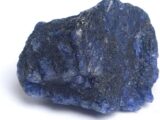
When we only call it “sapphire” we are always referring to the blue colour. One of the most famous is the “Logan Sapphire”, with a deep blue colour and exceptional clarity, especially for a stone of its size. It was examined by the Gemological Institute of America in 1997 and found to be a natural coloured sapphire with no evidence of heat treatment.
Recently the world’s largest sapphire weighing 42kg was found in Sri Lanka.
The company, Guruge Gems, which owns the stone split it into several pieces and cut the gem you see in the picture, it is worth an incredible 800 million dollars.
This colour has always been a favourite of churchmen, kings and queens, as it is loaded with spiritual meanings and prosperity.
What is asterism
In gemology, asterism is the property of some minerals (e.g. sapphire, emerald, garnet) to present, by the effect of reflection or refraction of light, the image of a star, in the skirt caused by needle inclusions of the mineral rutile.
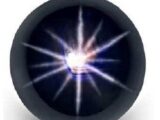
When the presence of this mineral is small it gives a silky appearance, when it is larger it causes asterism.
Some scholars argue that rutile does not cause asterism, but rather the presence of hollow channels crossed in three directions.
Sapphires that exhibit this effect are called star or asteric saira and their value depends not only on the carat of the stone, but also on its colour and the visibility and intensity of the asterism.
Recently, this phenomenon is being caused in synthetic sapphires which has considerably decreased the value of natural stones that present it.
For the star effect to be perfect, the gem must be cut in the shape of a cabochon or sphere. In some cases the star appears to move as you turn the gem.
Stars can be 4, 6 or 12-pointed.
Synthetic sapphire
Synthetic sapphires, like other gems, are not artificial.
This confusion can be caused by inexperience or mistranslations. Artificial gems do not have any kind of trace or origin of the natural gem, i.e. it does not exist in nature.
Synthetic gems, produced in a laboratory, have as raw material pulverised natural gems, which undergo a process of casting and recrystallisation, so that their properties are very similar to natural ones and, in some cases, identical.
This synthesis can only be identified by gemological microscopes. Because they go through rigorous and expensive processes, synthetic gems also have a high value, but are more affordable compared to natural ones.

The most commonly used methods in the synthesis of synthetic sapphires are:
- The first method which is the flame fusion or Verneuil process, created in 1902 by the Frenchman Auguste Verneuil, to this day remains the most widely used and one of the cheapest.
This process uses aluminium oxide powder, which is placed in a device, after which oxygen is injected, pushing the mixture downwards so that it meets the hydrogen injected at the bottom of the device.
This causes combustion with a flame reaching 2000°C. The aluminium oxide powder melts to form droplets, which fall onto a support, cool and crystallise into corundum.
By including salts of chromium, titanium, iron, etc. in this process, sairas, coloured sairas and rubies are obtained.
- The luxury process is based on dissolving alumina (in the case of sapphires and rubies) in a molten compound that acts as a solvent. This mixture is placed in a platinum crucible and then placed in a furnace with a temperature close to 1,300 ºC.
- The luxury process is based on the dissolution of the alumina in a molten compound.
- The hydrothermal process, on the other hand, involves various techniques for crystallising substances in aqueous solutions subjected to high temperatures and vapour pressures.
- Other processes such as Czochralski and Float-zone are also used.
Many synthetic sapphires are produced for industrial, commercial and technological applications.
To identify the natural or synthetic origin of the gem, examination of inclusions under magnifying glass and microscope is essential. Some other characteristics such as the nature and content of its trace elements can provide indications of this origin, however, they are not diagnostic.
Natural sapphires usually show mineral and liquid inclusions, as well as rectilinear colour zoning.
Sapphire treatments
1. Heat treatment
Heat treatment is used to intensify the natural colour of the gem or even modify it, the sapphire can be either lighter or darker.
It is also used to improve the clarity of the stone. High temperatures ranging from 1,500 to 1,800°C are used, in electric furnaces with or without oxygen.
The final colour is permanent and very stable, provided the stone is not exposed to high temperatures again.
This treatment is considered the most natural and acceptable by the GIA and other certiication laboratories, because there is no addition of any component.
This process “finishes” the chemical reaction of the mineral impurities that occur naturally within the stone.
2. Diffusion
This process consists of introducing impurities into the gem by diffusion of oxides at high temperatures (around 1,900 ºC).
The yolk is placed in a crucible, mixed with titanium oxide or other powdered colouring agent and heated to a high temperature. The atmosphere and time are variable.
The result is a thin highly coloured layer of stable colour.
3. Bleaching
Whitening consists of the use of chemicals to lighten the yolk or to remove unwanted colour.
Other treatments such as cavity filling, heating followed by cooling and tinting are also used, but many are temporary and unacceptable.
Classification of sapphire
As with other coloured gems, sapphire grading is based on colour saturation and intensity, transparency, cut and size, the same 4C’s as diamond.
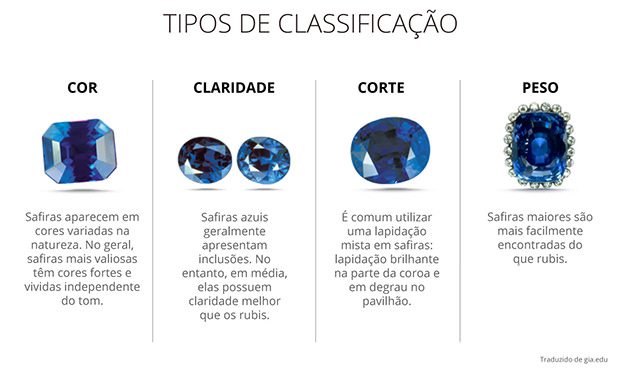
1. COLOUR
Sapphires come in a wide range of colours and each colour has its own quality variations. In general, the more intense the colour and the smaller the amount of distracting zones (inclusions), the more valuable the gem.
For blue sapphires, the assessment of colour is more important in determining their value.
The most valued are velvety blues to violetish blues (called violetish blue), amidst medium-dark tones. Saturation should be as strong as possible without darkening the colour and compromising brilliance.
The colour grading of sapphires is divided into three quantifiable categories: intensity (saturation), hue (colour) and tone (light/dark) specified by the GIA.
Terms such as “blue”, “slightly greenish blue”, “very slightly greenish blue” are used to describe colour trends.
The colour gradation nomenclature also specifies six levels of saturation ranging from “greyish” to “moderately strong” to “vivid colours” and, nine levels of tone, ranging from “very very light” to “very very dark”.
2. TRANSPARENCY / CLARITY
The degree of visibility through a sapphire is known as transparency, which ranges from transparent to opaque, with transparent being the ideal, as categorised below:
Transparent
Clear and distinct visualisation of objects through the stone. These sapphires generally have excellent lustre despite occasional inclusions.
Semi-transparent
Slightly hazy or blurred visualisation through the stone.
Translucent
Difficult to see through the sapphire. Light is slightly diffused.
Semi-translucent or semi-opaque
A small fraction of the light passes through the stone.
Opaca
Almost no light passes through the stone.
Blue sapphires tend to have more inclusions than most coloured sapphires. The term “inclusion” is used to deinine characteristics found within a gemstone and are often used to indicate that the stone is of natural origin.
Inclusions generally decrease the value of the gem, especially if they threaten durability. They can come in many forms such as crystals (solid inclusions such as small grains), silk (fine rutile fibres) which, despite being an imperfection, is preferred as it sometimes gives the gem a velvety appearance, increasing its value, cracks, fingerprints (inclusions that have the appearance).
3. CARAT / WEIGHT
The effect of carat on the value of a sapphire varies by colour. Yellow sapphires are relatively abundant in sizes above five carats, but five carat Padparadscha sapphires are extremely difficult to find.
Blue, pink, orange or Padparadscha sapphires exceeding fifteen carats are especially valuable.
Because sapphires have a high density, a one-carat sapphire looks smaller than a diamond of the same weight.
4. CUT
Comparable to diamonds, the best cuts of sapphires offer a higher depth-to-width ratio.

Deeper stones look smaller but show more colour than if they were cut to normal proportions.
They also preserve the weight and, consequently, the value of the gem. When the cut is shallow they appear lighter in colour than deep ones. Quality sapphires have good symmetry when viewed perilously – reflecting light evenly.
As the original shape of the crystal is a hexagonal pyramid, the deep cut gives better colour and proportions.
The cuts are oriented according to colour zoning (different colours in certain areas), pleochroism (different colours in different directions) and the clarity of the gem.
The star sapphire is always cabochon cut, to display the asterism.
Most sairas are cut in oval, emerald, round cut and cushion cuts. In mixed cuts, the pavilion is cut in parallel steps and the top is of the brilliant type, as in the emerald cut, which allow better utilisation of the gem.
Currently, in Thailand, India or Sri Lanka, the vast majority of sairas have mixed cuts.
In the picture below you can see the most common types of sapphire cuts.
Care of the sapphire
Due to its hardness, sapphire does not require much care and can be cleaned with just warm water and soap, also a portion of ammonia to six parts of water can be used.
Use a toothbrush to scrub behind the stone where it can collect dust. As with most gemstones, avoid heavy work or contact with chemicals as this can damage the stone.




















